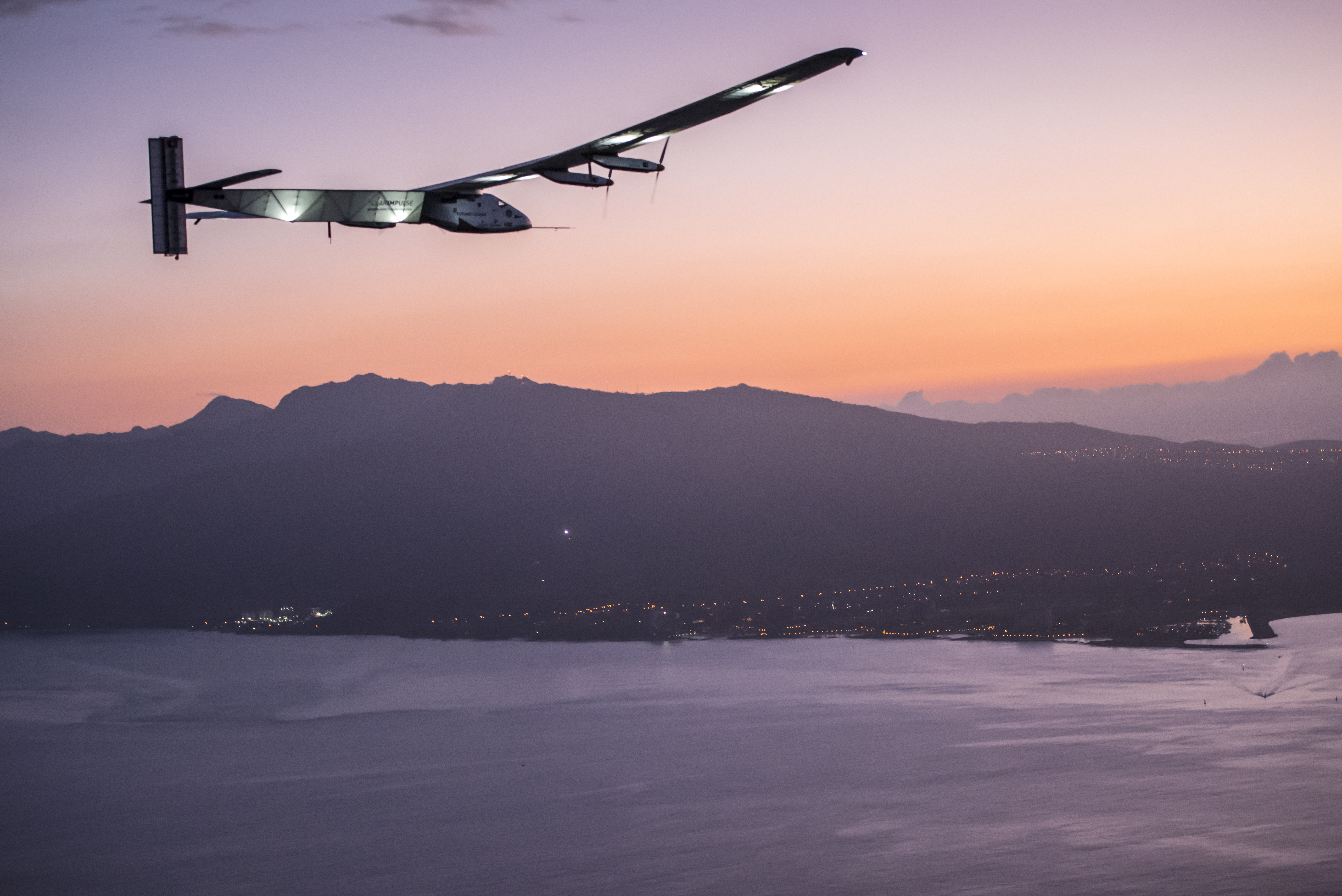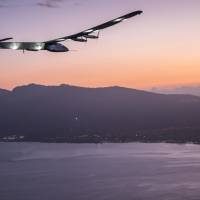Solar Impulse 2 is grounded with battery damage in Hawaii, the project team said Saturday, dealing another delay to the world's first attempt to fly around the globe using solar power.
In a statement, the team said the solar-powered plane's batteries overheated during its record-breaking five-day nonstop flight from Nagoya Airport to Kalaeloa Airpot near Honolulu.
The aircraft is grounded for at least two to three weeks, it said.
"The damage to certain parts of the batteries is irreversible and will require repairs and replacements that will take several weeks to work through," the statement said.
The flight from Nagoya lasted almost 118 hours, with Swiss pilot Andre Borschberg taking fragmented catnaps as he looped the aircraft through a complicated series of daytime ascents and nighttime descents.
"During the first (ascent) on day one of the flight from Nagoya to Hawaii, the battery temperature increased too much due to over insulation," the team said.
While ground engineers noticed the problem from data the plane was sending back, "there was no way to decrease the temperature for the remaining duration of the flight.
"The Solar Impulse engineering team is looking at various options for better management of the cooling and heating process for very long flights," it said.
The plane departed Abu Dhabi in March and spent an unscheduled month on the ground in Nagoya waiting out bad weather.
Borschberg told The Japan Times during that period that the delay was so serious the plane might reach the eastern coast of the United States too late this year to cross the Atlantic Ocean. He said every day spent on the ground brought the project closer to having to pause and resume next year.
Co-pilot Bertrand Piccard was scheduled to take over from Borschberg for the leg from Hawaii to Phoenix, Arizona.


















With your current subscription plan you can comment on stories. However, before writing your first comment, please create a display name in the Profile section of your subscriber account page.